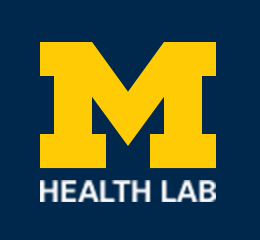By Kelly Malcom / U-M
‘It’s like breathing’ is a turn of phrase meant to convey that something is natural and effortless.
But over the past couple of years, various emerging threats—from worsening climate change to the COVID-19 pandemic—have shown that breathing can’t always be taken for granted and that protecting your lung health is of critical importance.
MeiLan Han, M.D., a professor of medicine in the Division of Pulmonary and Critical Care at the University of Michigan, offers insight and advice to help you breathe easier.
What does COVID-19 do to your lungs?
Han: Essentially the COVID-19 virus enters the respiratory tract and takes over the cells lining your respiratory tract, turning them into virus producing machines that in turn coat your entire respiratory tract with viral particles. The reason we get sick is because there’s a war going on between the virus and your lungs.
The cells that normally regenerate the lung lining are also killed off. As fluid and cellular debris build up, they begin to accumulate, causing shadows we see on X-ray indicating pneumonia. As the functioning lung units become ravaged, they no longer do what you need them to do: bring in oxygen and remove carbon dioxide.
We often treat patients with COVID-19 who aren’t getting enough oxygen using a specialized oxygen delivery method called high-flow nasal cannula to drive large amounts of oxygen into the lungs. If this isn’t adequate, we sedate patients and can provide oxygen through a mechanical ventilator. Unfortunately, the mortality rate for people who require invasive mechanical ventilation has been high.
I think overall we’re doing a better job now fighting COVID-19 than we were when the pandemic first began, but it’s obviously still scary for all of us when a patient gets that sick.
What has been learned about COVID-19 that might help with fighting other respiratory viruses?
Han: We thought a lot of respiratory diseases were only transmitted via larger respiratory droplets, which when exhaled, fall relatively quickly to the ground and can only spread so far.
What we’ve learned during the COVID-19 pandemic, however, is that coronaviruses are also spread through aerosols, much tinier particles that can stay in the air much longer and travel farther. Social distancing and hand hygiene work for droplets, but for aerosols, masks and good ventilation become primary infection mitigation strategies.
I treat patients with chronic obstructive pulmonary disease, commonly known as COPD, and one of the amazing things is that the frequency of flare-ups or exacerbations has plummeted during the pandemic.

With an exacerbation, your breathing gets harder and often you require antibiotics or steroids and in severe cases, hospitalization. What we were finding was that some of the precautions we were taking for COVID are likely working to prevent or reduce transmission of a whole host of respiratory viruses.
I think we now know better how to protect ourselves against respiratory viruses in general and I think there’s going to be heightened awareness moving forward. Some people, such as those who are immunocompromised or who have chronic pulmonary conditions, might wear masks in certain settings, at least part of the year. Our understanding of respiratory virus transmission and how we can protect ourselves has probably been forever changed.
What role does ventilation play for transmission of COVID-19 and other viruses?
Han: Ventilation is incredibly important. Unfortunately, we have seen that even vaccinated individuals can become infected and still transmit SARS-CoV-2, particularly the Delta variant. That concerns many of us in the health care field.
We are currently rolling out boosters for individuals at high risk of severe infection. Gatherings are always safer outside when possible where masks may not be needed if you are fully vaccinated, you are not in a tightly crowded setting and you are not in an area of substantial or high transmission.
When indoors, you may still want to wear a mask indoors in public, even with vaccination, if you have a chronic health condition, a weakened immune system or in an area of high transmission. We’ve seen the importance of mask wearing in schools for controlling spread, where kids are largely unvaccinated.
In work settings, you can also talk to your employer about upgrading HVAC systems with better filters or if you have control over your space, using HEPA filters, to reduce risk of transmission.
Is there anything you can do to proactively protect your lungs?
Han: Absolutely, starting at an early age. The lungs continue to development until you’re about age 25. What we’re finding is many chronic lung diseases may actually begin much earlier. Childhood exposures may lead to reduced peak lung function, making adults more susceptible to further injury.
For instance, nicotine exposure in the womb can alter airway development. Secondhand smoke exposure as a child can lead to impaired lung function. Pollution and climate change are constant threats to lung health—wildfires, dust due to drought, air pollution from industry and vehicles all drive particulate matter that ultimately can contribute to poor lung health.
One way we can protect our respiratory health is to reduce risk of respiratory infections through vaccination. Make sure your children receive age-appropriate vaccinations, including the flu and COVID shots.
There is some evidence that a Mediterranean diet high in fruits and vegetables and low in saturated fats can be protective for lung health. Also, studies suggest fitness levels in young adulthood are associated with preserved lung health into older age.
What should you do if you’re worried about your lung health?
Han: If you are having shortness of breath with exercise or a cough or anything seems off, you really have to be proactive. Talk to your physician about undergoing a breathing test called spirometry. It comes down to keying in on healthy behaviors and symptoms and if you are symptomatic or concerned, ask your doctor, and get further testing done and if needed, go in to see a pulmonologist.
Han is co-chair of the University of Michigan COPD Quality Improvement Committee and co-authored the University of Michigan COPD Guidelines. She also serves on the scientific advisory committees for both the COPD Foundation and American Lung Association, serves as a spokesperson for the American Lung Association and recently released a new book entitled “Breathing Lessons: A Doctor’s Guide to Lung Health”.











